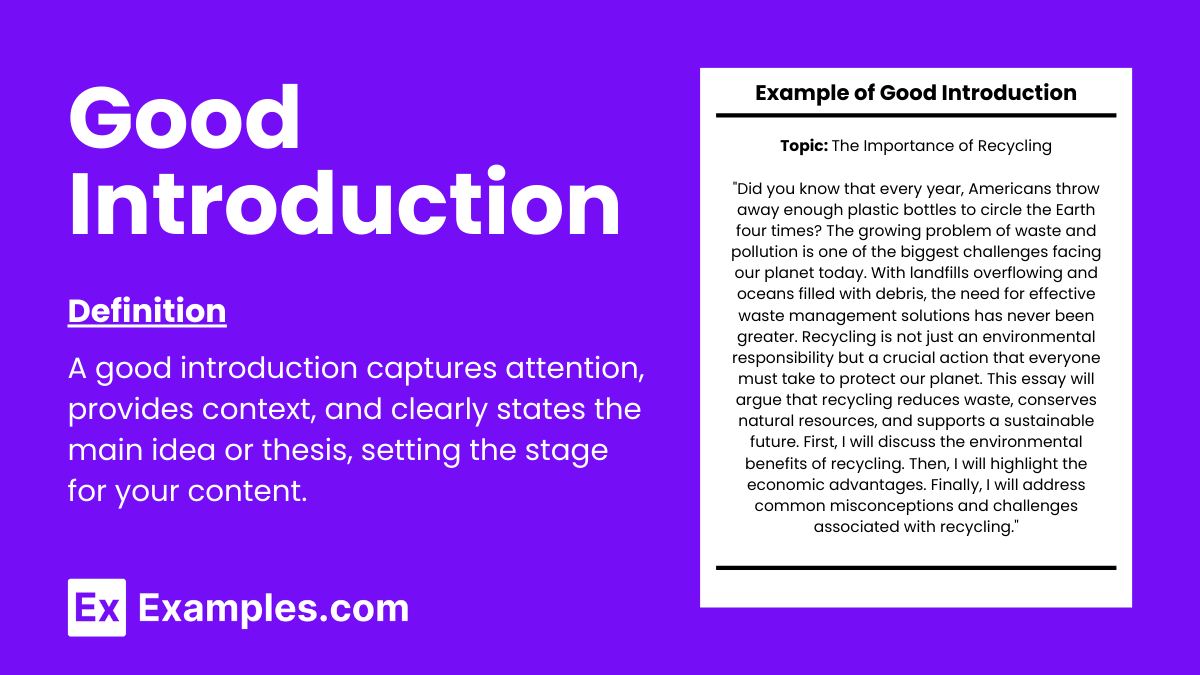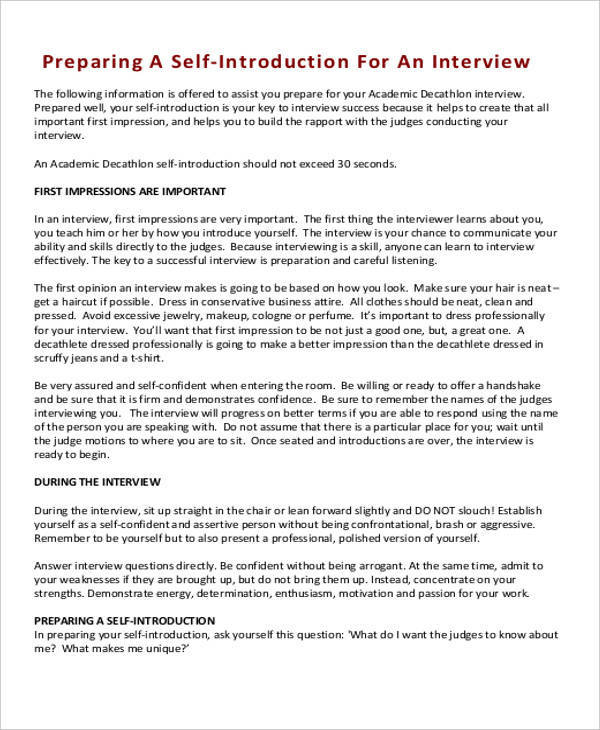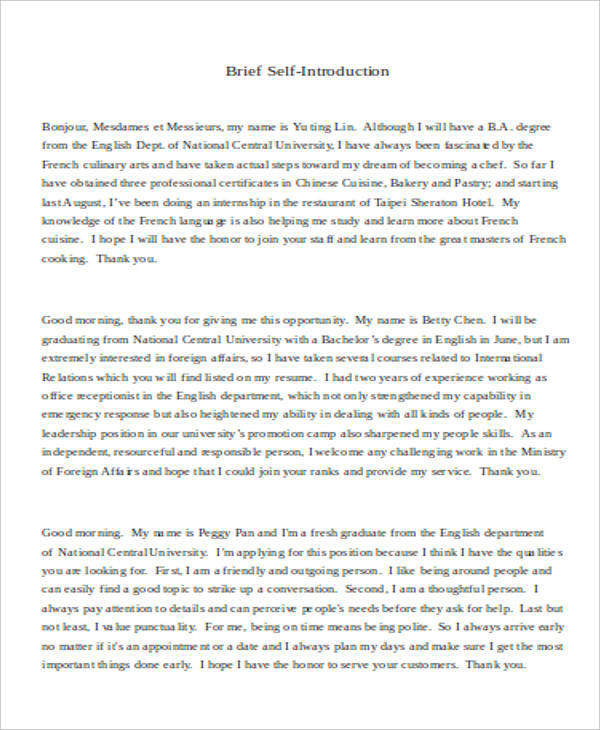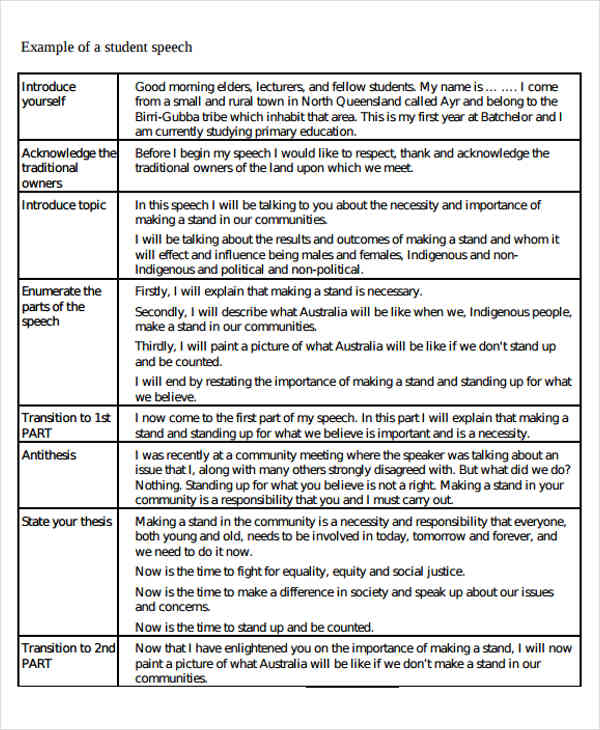35+ Good Introduction Examples
In the realm of effective writing, a good introduction is the compass that guides readers through the vast landscape of your content. It’s the gateway to your ideas, the spark that ignites curiosity, and the cornerstone upon which the rest of your work stands. In this article, we will explore the art of crafting captivating introductions, understand what makes them effective, and provide you with a step-by-step guide to master this essential skill.
What is a Good Introduction?
A good introduction is more than just a few lines of text; it’s an invitation, a promise, and an initial impression. This crucial element sets the context for your piece and establishes the theme you intend to explore. It’s the bridge that connects your readers to the heart of your content, using a combination of proper nouns, simple sentences, and carefully chosen verbs to engage them from the very beginning. By avoiding clichés and embracing literary devices like metaphors, you can infuse your introduction with a unique flair that captures attention and sustains interest.
Good Introduction Examples for Essays
Crafting a strong introduction for an essay is essential to engage the reader and set the tone for the rest of the paper. Here are several examples of effective introductions for different types of essays:
1. Narrative Essay
Title: “The Day That Changed Everything”
Introduction:
It was a crisp autumn morning, and the air was filled with the promise of something extraordinary. As I walked to school, the crunch of leaves underfoot mirrored the swirling thoughts in my mind. Little did I know that this day would mark the beginning of a journey that would shape my future in unimaginable ways. The events that unfolded not only altered the course of my life but also taught me invaluable lessons about resilience and the power of a positive mindset.
2. Argumentative Essay
Title: “The Importance of Renewable Energy”
Introduction:
In the face of escalating climate change, the need for renewable energy sources has never been more critical. Fossil fuels, the backbone of our current energy infrastructure, are depleting rapidly while contributing significantly to global warming. By transitioning to renewable energy, such as solar and wind power, we can reduce our carbon footprint and create a sustainable future. This essay will argue that the benefits of renewable energy far outweigh the costs and that immediate action is necessary to combat environmental degradation.
3. Expository Essay
Title: “The Evolution of Technology in Education”
Introduction:
Technology has revolutionized every aspect of our lives, and education is no exception. From the advent of the internet to the proliferation of smartphones, digital tools have transformed how we learn and teach. This essay will explore the evolution of technology in education, examining its impact on teaching methodologies, student engagement, and access to information. By understanding these changes, we can better appreciate the role of technology in shaping the future of education.
4. Descriptive Essay
Title: “A Day at the Beach”
Introduction:
The sun was just beginning to rise, casting a golden hue across the tranquil waters of the ocean. The gentle sound of waves lapping against the shore created a soothing symphony, while the salty breeze invigorated my senses. As I stepped onto the soft, warm sand, I felt a sense of peace wash over me. This essay will paint a vivid picture of a perfect day at the beach, capturing the sights, sounds, and sensations that make it an unforgettable experience.
5. Compare and Contrast Essay
Title: “Public vs. Private Schools: Which is Better?”
Introduction:
Choosing the right school for a child is a crucial decision that parents face, often torn between public and private education. Public schools, funded by the government, offer a diverse environment and standardized curriculum, while private schools boast smaller class sizes and specialized programs. This essay will compare and contrast the advantages and disadvantages of public and private schools, helping parents make an informed choice based on their child’s needs and aspirations.
Good Introduction Examples for Interview
Making a strong first impression is crucial in interviews. Below are the examples tailored for different types of interviews, each demonstrating how to effectively introduce yourself and set a positive tone for the conversation.
1. Job Interview
“Good morning, Mr. Smith. My name is Jane Doe, and I am thrilled to be here today. With a background in digital marketing and five years of experience at ABC Corporation, I have developed a strong skill set in SEO, content strategy, and social media management. I am particularly excited about this opportunity at XYZ Company because of your innovative approach to digital marketing and commitment to sustainable practices. I am eager to bring my expertise and passion to your team.”
2. College Admission Interview
“Hello, Dr. Johnson. My name is John Doe, and I am a high school senior at Greenfield High School. I have always been passionate about environmental science, which is why I am excited about the possibility of joining the Environmental Studies program at your university. Over the past few years, I have participated in various science fairs, won awards for my research on renewable energy, and volunteered with local environmental organizations. I believe that your program’s emphasis on hands-on learning and community involvement will be the perfect environment for me to grow academically and personally.”
3. Media/Press Interview
“Good afternoon, Ms. Brown. Thank you for having me. My name is Sarah Lee, and I am the author of ‘The Modern Entrepreneur.’ I have spent the last decade building and advising startups in the tech industry, and my book aims to provide practical advice and insights to aspiring entrepreneurs. I am excited to share my journey and the lessons I have learned along the way with your audience today.”
4. Panel Interview
“Good morning, everyone. My name is Michael Harris, and I am honored to be here today. I bring over ten years of experience in project management, specializing in large-scale IT implementations. In my previous role at Tech Solutions Inc., I successfully led a team that delivered a multi-million-dollar project on time and under budget. I am particularly impressed by your company’s innovative projects and am eager to discuss how my background and skills can contribute to your ongoing success.”
5. Informational Interview
“Hi, Ms. Taylor. Thank you so much for taking the time to meet with me today. My name is Emily Clark, and I am currently a junior at State University majoring in Business Administration. I am very interested in learning more about career paths in human resources, especially in talent acquisition and development. I have completed internships at two companies where I assisted with recruitment and training, and I am eager to hear about your experiences and any advice you might have for someone starting out in this field.”
Good Introduction Examples for Research Papers
A compelling introduction for a research paper is essential to engage your readers and clearly state the purpose and significance of your research. Here are some effective introduction examples for different types of research papers:
1. Scientific Research Paper
Title: “The Effects of Climate Change on Marine Biodiversity”
Introduction:
Climate change is rapidly altering the world’s ecosystems, with profound implications for marine biodiversity. Rising temperatures, ocean acidification, and altered circulation patterns are impacting species distribution, reproductive cycles, and ecosystem stability. This research aims to analyze the specific effects of these changes on marine life, focusing on coral reefs, fish populations, and plankton communities. By understanding these impacts, we can better inform conservation strategies and policy decisions to protect our oceans.
2. Social Sciences Research Paper
Title: “The Impact of Social Media on Teen Mental Health”
Introduction:
In recent years, social media has become an integral part of teenagers’ lives, raising concerns about its impact on their mental health. Studies suggest a correlation between excessive social media use and increased rates of anxiety, depression, and loneliness among teens. This research seeks to explore these relationships further, examining how social media influences self-esteem, peer relationships, and emotional well-being. Through surveys and interviews, we aim to identify both the positive and negative effects of social media on adolescent mental health.
3. Literature Review Research Paper
Title: “The Evolution of Feminist Themes in 20th Century Literature”
Introduction:
Feminist literature has undergone significant transformations throughout the 20th century, reflecting broader social and political changes. From the early suffragette movement to contemporary discussions of gender equality, feminist writers have continually challenged traditional norms and advocated for women’s rights. This literature review examines key works and authors that have shaped feminist discourse, analyzing how themes of empowerment, identity, and resistance have evolved over time. By tracing these developments, we gain insight into the ongoing struggle for gender equality and its representation in literature.
4. Historical Research Paper
Title: “The Causes and Consequences of the Industrial Revolution”
Introduction:
The Industrial Revolution marked a turning point in human history, profoundly transforming economies, societies, and daily life. Originating in Britain in the late 18th century, it brought about unprecedented technological advancements and industrial growth. This research investigates the underlying causes of the Industrial Revolution, including innovations in agriculture, transportation, and manufacturing. Additionally, it explores the social and economic consequences, such as urbanization, labor conditions, and the rise of capitalism. Understanding these factors provides valuable lessons for contemporary economic development and technological change.
5. Medical Research Paper
Title: “Advancements in Gene Therapy for Genetic Disorders”
Introduction:
Gene therapy represents a groundbreaking approach to treating genetic disorders, offering hope for conditions previously considered incurable. By directly targeting and correcting defective genes, this technology has the potential to revolutionize medicine. This research paper explores recent advancements in gene therapy, focusing on techniques such as CRISPR-Cas9 and viral vector delivery systems. We will examine clinical trials and case studies to assess the efficacy and safety of these treatments, and discuss the ethical considerations and future directions of gene therapy in medical practice.
Good Introduction Examples for Paragraphs
Crafting a strong introductory sentence for a paragraph is essential to engage the reader and clearly introduce the main idea. Here are some effective introduction examples for different types of paragraphs:
1. Descriptive Paragraph
Introduction:
The sunset over the mountains was a breathtaking spectacle. As the sun dipped below the horizon, it painted the sky with brilliant shades of orange, pink, and purple, casting a warm glow over the serene landscape.
2. Narrative Paragraph
Introduction:
On my first day of high school, I felt a mix of excitement and nervousness. As I walked through the bustling hallways, the unfamiliar faces and towering lockers made me realize that this was the beginning of a new chapter in my life.
3. Expository Paragraph
Introduction:
Photosynthesis is a vital process that sustains life on Earth. Through this process, plants convert sunlight, carbon dioxide, and water into glucose and oxygen, providing energy for themselves and oxygen for other living organisms.
4. Persuasive Paragraph
Introduction:
Implementing a four-day workweek can significantly improve employee productivity and well-being. Studies have shown that reducing the number of working days leads to higher job satisfaction, lower stress levels, and increased efficiency.
5. Analytical Paragraph
Introduction:
The symbolism in George Orwell’s ‘Animal Farm’ serves as a powerful critique of totalitarian regimes. By using farm animals to represent historical figures and events, Orwell effectively illustrates the corruption and hypocrisy inherent in such systems.
Good Introduction Examples for Informative Essays
An effective introduction for an informative essay engages the reader and clearly presents the topic and purpose of the essay. Here are some examples for different informative essay topics:
1. Health and Wellness
Title: “The Benefits of Regular Exercise”
Introduction:
Regular exercise is essential for maintaining a healthy lifestyle and improving overall well-being. From reducing the risk of chronic diseases to enhancing mental health, the positive impacts of physical activity are well-documented. This essay will explore the numerous benefits of regular exercise, providing insights into how different types of physical activities can contribute to a healthier and happier life.
2. Technology
Title: “The Rise of Artificial Intelligence”
Introduction:
Artificial Intelligence (AI) is transforming industries and reshaping the future of work. From healthcare and finance to transportation and entertainment, AI technologies are revolutionizing the way we live and operate. This essay will provide an overview of AI, including its history, current applications, and potential future developments, highlighting the profound impact it has on our society.
3. Environmental Science
Title: “The Importance of Biodiversity Conservation”
Introduction:
Biodiversity, the variety of life on Earth, is crucial for the stability and resilience of ecosystems. It supports ecosystem services that are vital for human survival, such as food, clean water, and disease regulation. This essay will discuss the importance of biodiversity conservation, the threats to biodiversity, and the strategies that can be employed to protect and preserve our planet’s natural heritage.
4. Education
Title: “The Role of Technology in Modern Education”
Introduction:
Technology has become an integral part of modern education, enhancing the learning experience in numerous ways. From interactive digital tools to online resources, technological advancements are making education more accessible and engaging for students worldwide. This essay will examine the role of technology in education, exploring its benefits, challenges, and the future potential of tech-enhanced learning environments.
5. History
Title: “The Impact of the Industrial Revolution”
Introduction:
The Industrial Revolution was a pivotal period in history that dramatically changed the way people lived and worked. Originating in Britain in the late 18th century, it led to significant advancements in technology, manufacturing, and transportation. This essay will delve into the causes and effects of the Industrial Revolution, exploring how it shaped modern society and set the stage for future technological progress.
Good Introduction Examples for Speech
Creating a captivating introduction for a speech is crucial to grab the audience’s attention and set the tone for your message. Here are some effective introduction examples for different types of speeches:
1. Motivational Speech
Title: “Overcoming Adversity”
Introduction:
Good morning, everyone. Imagine standing at the base of a mountain, looking up at the peak shrouded in clouds. The journey seems daunting, almost impossible. Yet, with each step, you grow stronger, more determined. Today, I want to share with you the incredible power of resilience and how we can overcome any adversity by taking one step at a time, no matter how insurmountable it may seem.
2. Informative Speech
Title: “The Future of Renewable Energy”
Introduction:
Hello and thank you for joining me today. As we stand on the brink of a climate crisis, the need for sustainable energy solutions has never been more urgent. Renewable energy sources, such as solar and wind power, offer a promising path forward. In this speech, we will explore the latest advancements in renewable energy, the benefits they bring, and how they can help us build a more sustainable future.
3. Persuasive Speech
Title: “The Case for Universal Healthcare”
Introduction:
Good afternoon, ladies and gentlemen. Imagine a world where no one has to choose between paying for food or life-saving medication, where everyone has access to quality healthcare regardless of their financial situation. Universal healthcare can make this vision a reality. Today, I will present compelling reasons why our country should adopt a universal healthcare system, highlighting the moral, economic, and social benefits it offers.
4. Commemorative Speech
Title: “Honoring Our Veterans”
Introduction:
Ladies and gentlemen, today we gather to honor the brave men and women who have served our country. Their courage, sacrifice, and dedication have preserved our freedoms and protected our way of life. As we reflect on their contributions, let us remember the profound impact they have had on our nation. Join me in paying tribute to our veterans and expressing our deepest gratitude for their service.
5. Entertaining Speech
Title: “The Joys and Challenges of Parenting”
Introduction:
Hello everyone, and thank you for being here today. Parenting is an incredible journey filled with laughter, love, and, let’s be honest, a fair share of chaos. Whether it’s the hilarious moments of toddler antics or the heartwarming milestones, being a parent is an adventure like no other. In this speech, I’ll share some amusing anecdotes and insights into the joys and challenges of raising children, celebrating the unique experiences that come with being a parent.
Good Introduction Examples for a Presentation
Creating a strong introduction for a presentation is essential for engaging your audience and setting the tone for your topic. Here are some effective introduction examples for various types of presentations:
1. Business Presentation
Topic: Innovative Marketing Strategies
“Good morning, everyone. Thank you for being here today. My name is John Smith, and I am the Marketing Director at XYZ Company. Today, I am excited to share with you some innovative marketing strategies that have been driving our recent success. By leveraging data analytics, social media trends, and creative content, we have developed a comprehensive approach to reach and engage our target audience more effectively. Let’s dive in and explore how these strategies can transform your marketing efforts.”
2. Educational Presentation
Topic: The Impact of Technology on Education
“Hello, and welcome to today’s session on the impact of technology on education. My name is Jane Doe, and I am a professor of Educational Technology at ABC University. Over the past decade, technology has revolutionized the way we teach and learn, offering new opportunities and challenges. Today, we will explore how digital tools, online learning platforms, and innovative teaching methods are shaping the future of education. I look forward to discussing these exciting developments with you.”
3. Scientific Presentation
Topic: Advances in Renewable Energy
“Good afternoon, everyone. My name is Dr. Emily Green, and I am a researcher at the National Renewable Energy Laboratory. Today, I am thrilled to present recent advances in renewable energy technologies that are paving the way for a sustainable future. From solar and wind power to innovative storage solutions, these breakthroughs have the potential to drastically reduce our dependence on fossil fuels. Let’s explore the latest research and its implications for our planet.”
4. Motivational Presentation
Topic: Overcoming Adversity
“Hello, everyone. My name is Michael Johnson, and I am honored to be here with you today to talk about overcoming adversity. Life is full of challenges, but it’s how we respond to these obstacles that defines our success. Drawing from my own experiences and the stories of remarkable individuals, I will share strategies and mindsets that can help you navigate difficult times and emerge stronger. Let’s embark on this journey together.”
5. Product Launch Presentation
Topic: Introducing the New XYZ Smartphone
“Good evening, ladies and gentlemen. My name is Sarah Lee, and I am the Chief Product Officer at XYZ Tech. It is with great excitement that I introduce to you our latest innovation, the XYZ Smartphone. This cutting-edge device is designed to revolutionize your mobile experience with its advanced features, sleek design, and unparalleled performance. Join me as we unveil the key features and benefits that make the XYZ Smartphone a game-changer in the tech world.”
More Examples & Samples of Good Introduction
1. Self Introduction Essay Example

2. Self Introduction For College Students Example

3. Simple Self Introduction For Job Example

4. Self Introduction for an Interview Example
5. Professional Self Introduction Example
6. Student Self Introduction Example
How to Write a Good Introduction?
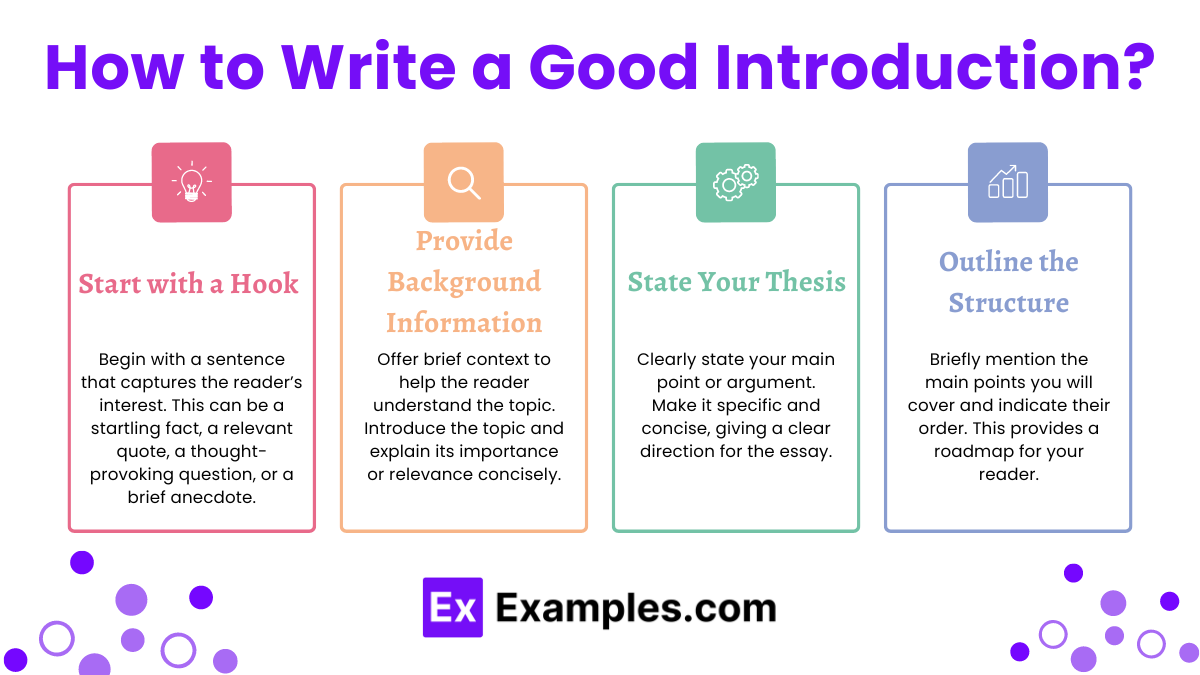
Writing a good introduction is essential for grabbing the reader’s attention and setting the tone for your entire piece. Whether you’re writing an essay, article, or any other type of content, a strong introduction can make a significant impact. Here’s a step-by-step guide to crafting a compelling introduction:
1. Start with a Hook
A hook is a sentence or two that grabs the reader’s attention and makes them want to keep reading. Some effective hooks include:
- A startling fact or statistic: Present an intriguing fact that relates to your topic.
- A relevant quote: Use a quote from a famous person or an expert in your field.
- A question: Pose a thought-provoking question that encourages the reader to think about the topic.
- A brief anecdote or story: Share a short, interesting story that introduces the topic.
2. Provide Background Information
After hooking your reader, provide some context or background information. This helps the reader understand the topic and sets the stage for the main points of your content. Be concise and relevant, avoiding unnecessary details.
3. State Your Thesis or Main Idea
Clearly state your thesis or the main idea of your piece. This is the central point you will be making in your writing. Ensure that your thesis is specific and concise, giving the reader a clear understanding of what to expect.
4. Outline the Structure
Briefly outline the structure of your content. Mention the main points you will cover in the order they will appear. This gives the reader a roadmap of your piece and helps them follow your argument or narrative.
How do I start a good introduction?
Begin with a hook to grab attention, provide relevant background information, and clearly state your thesis or main point.
What makes an effective hook in an introduction?
An effective hook can be a surprising fact, a relevant quote, a question, or a brief anecdote related to your topic.
How long should an introduction be?
Typically, an introduction should be around 10% of the total length of your essay or presentation.
Why is background information important in an introduction?
Background information sets the context, helping the reader understand the topic and why it is important.
What is a thesis statement?
A thesis statement is a concise summary of the main point or claim of your essay, usually one or two sentences.
How can I make my introduction engaging?
Use clear and vivid language, connect with your audience’s interests, and present a compelling thesis.
What should be avoided in an introduction?
Avoid vague statements, overly broad generalizations, and detailed explanations that belong in the body of your text.
Can an introduction include questions?
Yes, posing a question can engage the reader and encourage them to think about the topic from the beginning.
How do I transition from the introduction to the body?
Use a smooth transition sentence that links your introduction to the first main point of your body text.
What are common mistakes in writing introductions?
Common mistakes include being too verbose, lacking a clear thesis, and failing to engage the reader’s interest.



